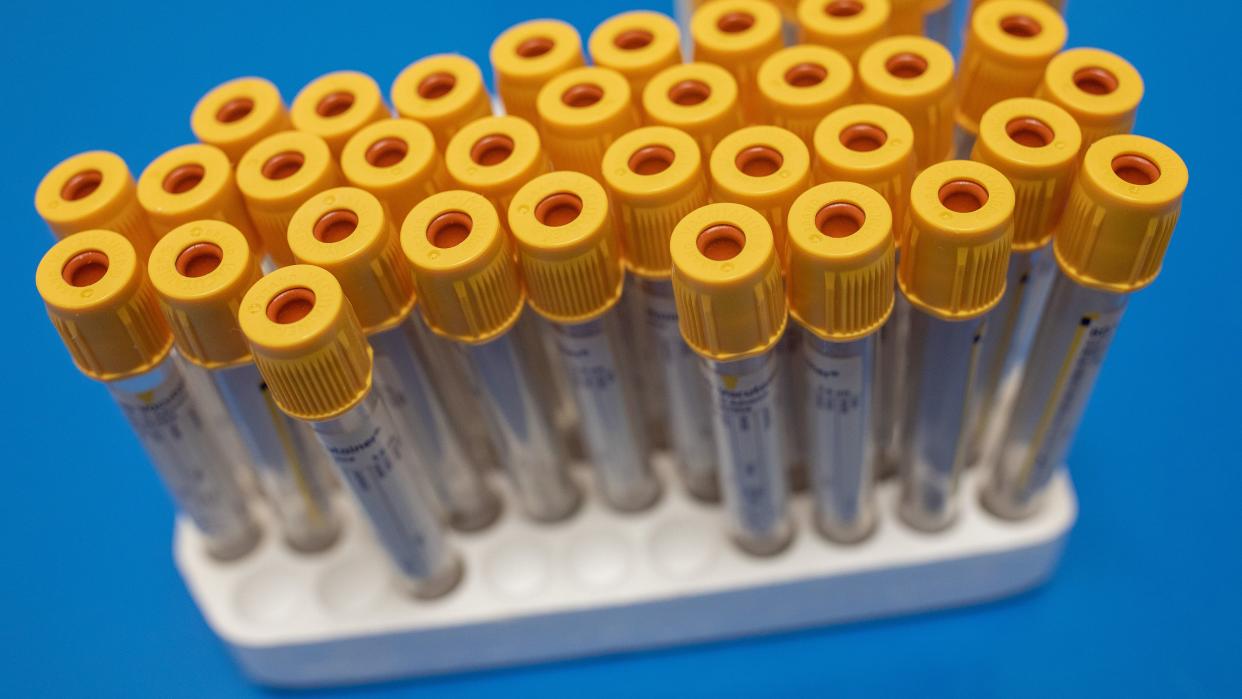Blood test could predict Parkinson’s seven years before symptoms – study

A simple blood test could predict Parkinson’s disease seven years before symptoms appear, marking a “major step forward” in diagnosis of the condition.
Researchers believe early prediction and diagnosis would help in finding treatments that could slow or stop Parkinson’s.
The test uses artificial intelligence (AI) to predict the disease, which is caused by the death of nerve cells in the part of the brain that controls movement.
When these nerve cells die or become impaired, they lose the ability to create a chemical called dopamine.
People with Parkinson’s are currently treated with dopamine replacement therapy after they have already developed symptoms, such as tremors or slowness of movement.
It is thought that early diagnosis and treatment would help protect the dopamine-producing brain cells.
Co-first-author Dr Michael Bartl, of University Medical Centre Goettingen and Paracelsus-Elena-Klinik Kassel, alongside Dr Jenny Hallqvist, UCL Queen Square Institute of Neurology, said: “By determining eight proteins in the blood, we can identify potential Parkinson’s patients several years in advance.
“This means that drug therapies could potentially be given at an earlier stage, which could possibly slow down disease progression or even prevent it from occurring.”
Professor David Dexter, director of research at Parkinson’s UK, said: “This research, co-funded by Parkinson’s UK, represents a major step forward in the search for a definitive and patient-friendly diagnostic test for Parkinson’s.
“Finding biological markers that can be identified and measured in the blood is much less invasive than a lumbar puncture, which is being used more and more in clinical research.”
The research found that when a branch of AI called machine learning analysed a panel of eight blood-based biomarkers whose concentrations are altered in patients with Parkinson’s, it could provide a diagnosis with 100% accuracy.
Senior author Professor Kevin Mills, of UCL Great Ormond Street Institute of Child Health, said: “As new therapies become available to treat Parkinson’s, we need to diagnose patients before they have developed the symptoms.
“We cannot regrow our brain cells and therefore we need to protect those that we have.
“At present we are shutting the stable door after the horse has bolted and we need to start experimental treatments before patients develop symptoms.”
He added that with sufficient funding, it is hoped the test will be used by the NHS within two years.
The experts suggest that with further research this test could potentially distinguish between Parkinson’s and other conditions that have some early similarities.
The team also looked at whether the test could predict the likelihood of someone going on to develop Parkinson’s.
Blood from 72 patients with Rapid Eye Movement Behaviour Disorder (iRBD) was analysed as it is known that about 75% to 80% of these people will go on to develop a synucleinopathy – a type of brain disorder caused by the abnormal build-up of a protein called alpha-synuclein in brain cells – including Parkinson’s.
The patients were followed up over 10 years and researchers say the AI predictions have so far been correct, with the team correctly predicting 16 patients would go on to develop Parkinson’s and being able to do this up to seven years before the onset of any symptoms.
According to Parkinson’s UK, around one in 37 people alive today in the UK will be diagnosed with Parkinson’s in their lifetime, and there are 153,000 people already living with the condition.
The researchers are hoping to secure funding to create a simpler test where a drop of blood can be spotted on a card and posted to the lab to investigate if it can predict Parkinson’s even earlier than the seven years before the onset of symptoms in this study.
The research, which was funded by an EU Horizon 2020 grant, Parkinson’s UK, the National Institute for Health and Care Research GOSH Biomedical Research Centre, and the Szeben-Peto Foundation, is published in Nature Communications.
